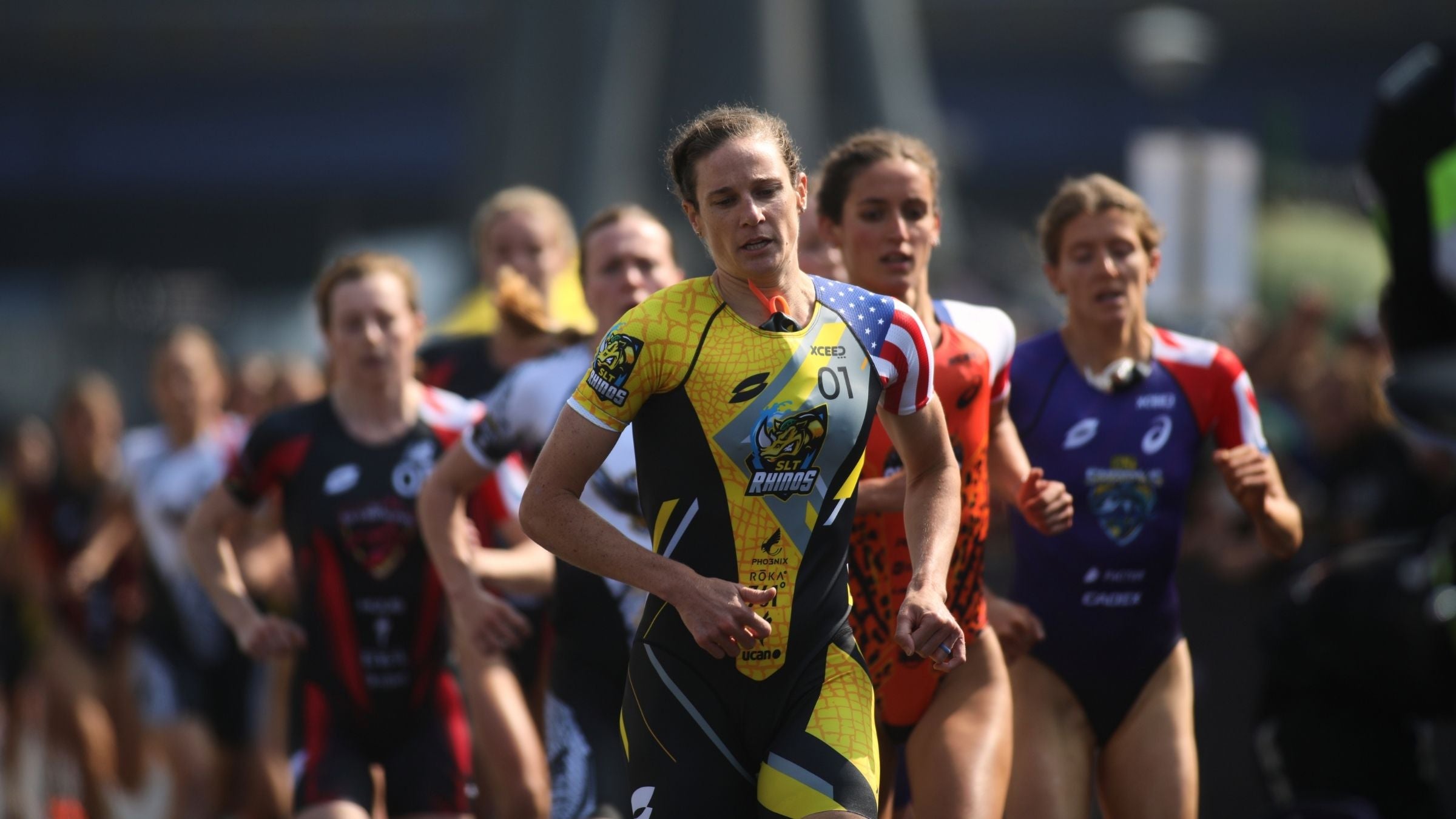Learn From An Olympic Medalist With These Top 5 Run Tips From Katie Zaferes

(Photo: Super League Triathlon)
With the fourth and final round of the Super League Triathlon taking place in Malibu, California, this weekend, there will be plenty of short-course stars looking to maximize their run speed over the fast and furious format of racing. Olympic bronze medalist Katie Zaferes—who currently sits in fifth place going into the final round—has given us a few insights into how she hones her run speed and strength.
Run Easy
Make your easy days easy and your hard days hard. Running on easy days should be done at a conversational pace (low heart-rate and ability to talk). For me, this means keeping my heart-rate under or around 130bpm. That enables me to keep it all at an easy effort. Usually I don’t look at heart-rate while I’m running, but will look at it afterwards. For me, just being able to talk and feel comfortable helps me keep it easy. If I get to a certain level I will back off and make it so it’s a nice relaxed run where I can take in my surroundings. By doing this, on your hard days, you are ready to go fast!
Don’t Ignore An Injury
If you have a consistent pain/injury, it is best to rest rather than push through it. Keeping a journal will help you keep track, understand if there is a trend, and know how long it has been going on. Be sure to tell your coach (if you have one)!
I think it’s also about knowing your body and it’s different for every person. If it becomes more of a pain than an ache then that is an indication for me that I would like to get it checked out or take a couple of days off.
Before seeking advice I would usually take a day or two to see if it goes away on its own and, if it doesn’t, then speak to someone. I would recommend if something is bothering you be proactive, pay attention to it, and take notes on it. If you wait a couple of weeks before doing anything then that could delay your recovery in the longer term.
Run With Others
Find running buddies to keep you company but also have the confidence to run solo as this can be more beneficial. If you’re running with others on an easy day, don’t be afraid to go slower. Equally, be sure to use others to push you on your hard days. As professional athletes, a lot of people think we are motivated all the time—and that’s not really the case. I find running with other people more enjoyable, it’s nice to run at other people’s paces and to hang out and be active at the same time. I find doing a run with friends is also a great way to catch up with them when I might not be able to otherwise.
Warm Up Well
Do some strides to wake your legs up before a session. I find that 4 sets of 15 to 30-second strides is an excellent way to get primed and ready. I’ll usually do a warm-up of 20 to 30 minutes. If the total amount of run time is longer it might end up being longer, maybe even an hour, but it’s typically a 20-minute warm-up and 20-minute cool-down.
It Is Not Always Easy
Know that some days aren’t going to feel good, but that doesn’t mean you can’t still have a good workout. Work on strengthening your mind as much as you put into your physical training. I like to read books to help me do this. Some recommendations include: Mind Gym and Let Your Mind Run by Deena Kastor. One of the things she says in her book is that you are trying to build up your toolbox so that you’re not relying on one specific strategy but trying to shuffle through many strategies in racing and training when you need them. I also like to use a lot of visualizations, a lot of segmenting. I like to know my course and often prepare using Google Maps to check out courses beforehand. A lot of self-talk and mantras help get me through different moments, too.